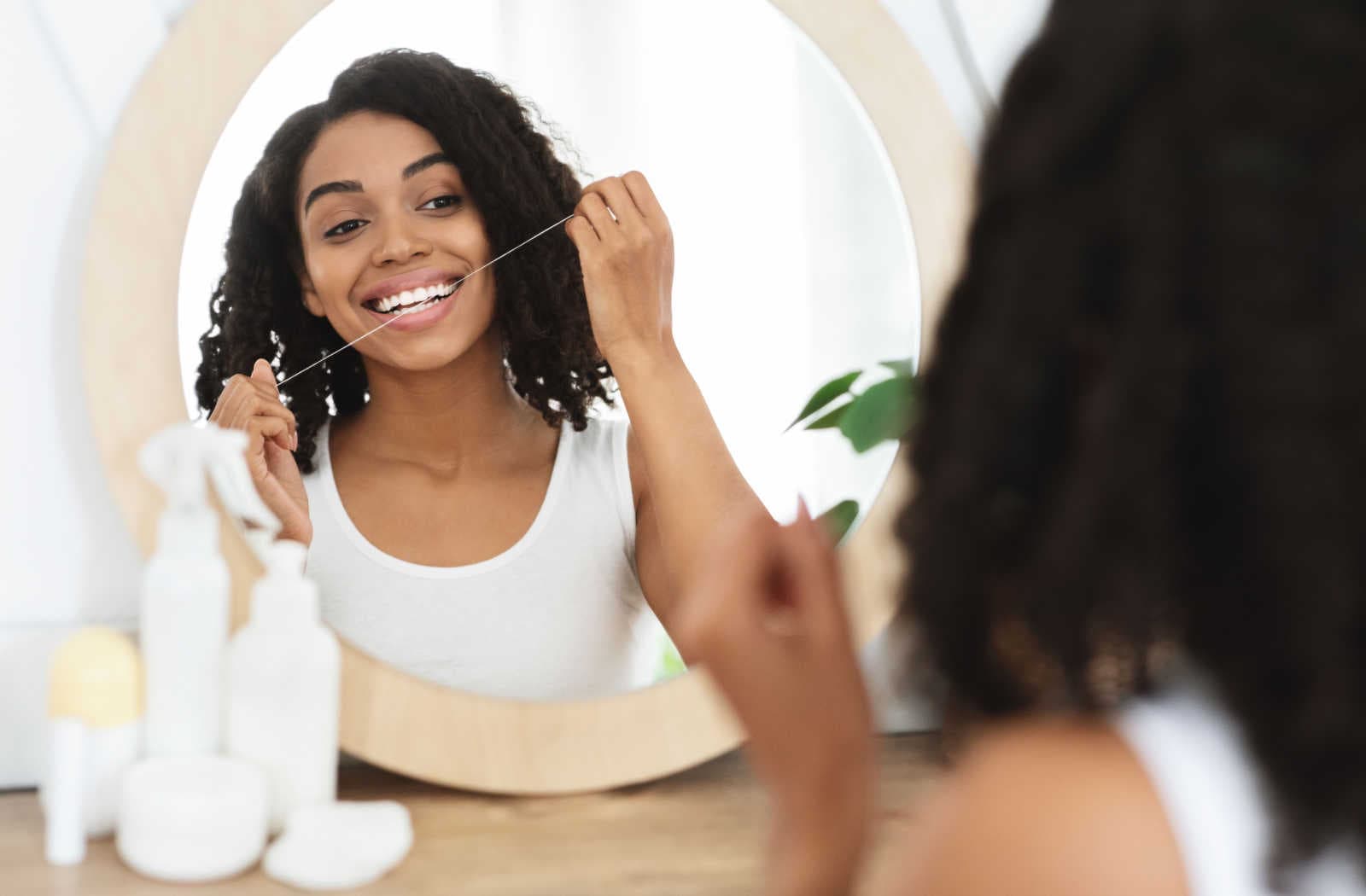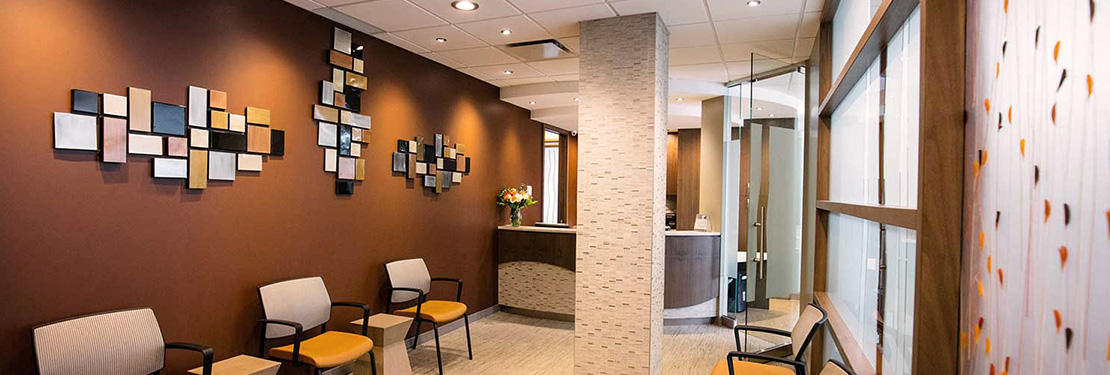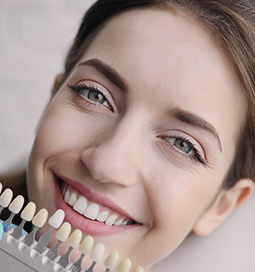When it comes to oral hygiene, there are 3 key practices you need to maintain to keep your teeth and gums healthy. One of those things is regular visits to your dentist’s office for exams and cleanings—can you guess the other 2?
If you guessed brushing and flossing, you’d be correct. Brushing helps to remove plaque and bacteria from the surface of your teeth, while flossing can remove plaque and food particles from between your teeth. But there is some debate about which to do first.
According to one study, research shows that flossing first and then brushing is preferred to brushing before flossing.
The Importance of Brushing & Flossing
Good at-home oral hygiene habits, such as brushing and flossing, help prevent gum disease. Gum disease occurs when too much bacteria in the mouth and surface of the teeth affect the soft tissue and bones that support your teeth.
Plaque, a sticky substance on your teeth, contains bacteria that release acid. The acid can erode the outer layer or enamel on your teeth’s surface. When plaque remains on the teeth because of inadequate brushing or flossing, it can harden within 24 to 36 hours. After 72 hours, the hardened plaque, called tartar, can form along the gum line and lead to gum disease.
The signs of gum disease from skipping dental cleanings and poor hygiene can include:
- Swollen, red, or tender gums
- Bleeding gums during or after brushing
- Bad breath
- Loose teeth
- Receding gums
Why Floss First Before You Brush?
The main reasons for flossing before brushing are:
- Reducing interdental plaque
- Increasing fluoride concentration
Flossing first helps remove plaque and food particles between the teeth that are harder to reach with a toothbrush. Flossing can loosen these and make them easy to remove when you brush.
Plaque removal by flossing and then brushing can lower your risk of developing gum disease. If you brush first and then floss, the released particles remain in the mouth until the next time you brush.
How to Floss Your Teeth
When you don’t floss, you miss cleaning one-third of the tooth’s surface. Flossing at least once a day can prevent plaque from hardening into tartar. Here’s a step-by-step guide on how to floss your teeth:
- First, take a length of floss from your hand to your shoulder and wrap it around your index and middle fingers. Leave 2 inches between your hands.
- Slide the floss between each tooth, including the last molars, and wrap it into a “C” shape. Wipe the tooth from the base of the tooth and gently under the gumline to the tip 2–3 times.
- If the floss picks up any particles, move to a new section of the floss. Discard the floss in the garbage after flossing.
- Now you can brush your teeth.
How to Brush Your Teeth
Regular brushing can help prevent tooth decay and gum disease. Brushing twice a day is good, but brushing after every meal is even better, as bacteria can attack teeth minutes after eating.
Brushing might seem simple enough, but your technique can determine how effective your brushing is. Here is a step-by-step guide on how to brush your teeth:
- Hold the brush at a 45-degree angle to your teeth. Use gentle, circular motions where your gums meet your teeth and over the entire tooth.
- Do this with every tooth, including the chewing surface and the outer and inner sides.
- Brushing should last a minimum of 2–3 minutes. You can use a timer to keep track.
- You can change your brushing pattern to ensure you don’t miss the same spots every time.
- Choosing the right toothbrush helps to clean your teeth better. A soft brush with round bristles with the right shape and size, which allows you to get to hard-to-reach areas, is ideal. You can also ask your dentist to recommend a toothbrush for your needs—and don’t forget to change your toothbrush every 3 months!
After brushing, many people rinse their mouths with water. It’s a big no-no. When you rinse your mouth with water or mouthwash, it washes away the fluoride.
You want fluoride to remain on your teeth because fluoride helps to strengthen teeth. If you use mouthwash, wait a couple of hours after brushing your teeth. If it’s fluoride mouthwash, don’t eat or drink for 30 minutes after rinsing.
Good Oral Hygiene Practices
Flossing first and then brushing can remove more dental plaque from the teeth and mouth and increase your fluoride retention, making your teeth stronger and more resistant to tooth decay.
While good brushing habits make a difference, there’s no substitute for regular checkups with your dentist and hygienist. Book your next exam and cleaning with Ti Dental today to maintain optimum dental health.








